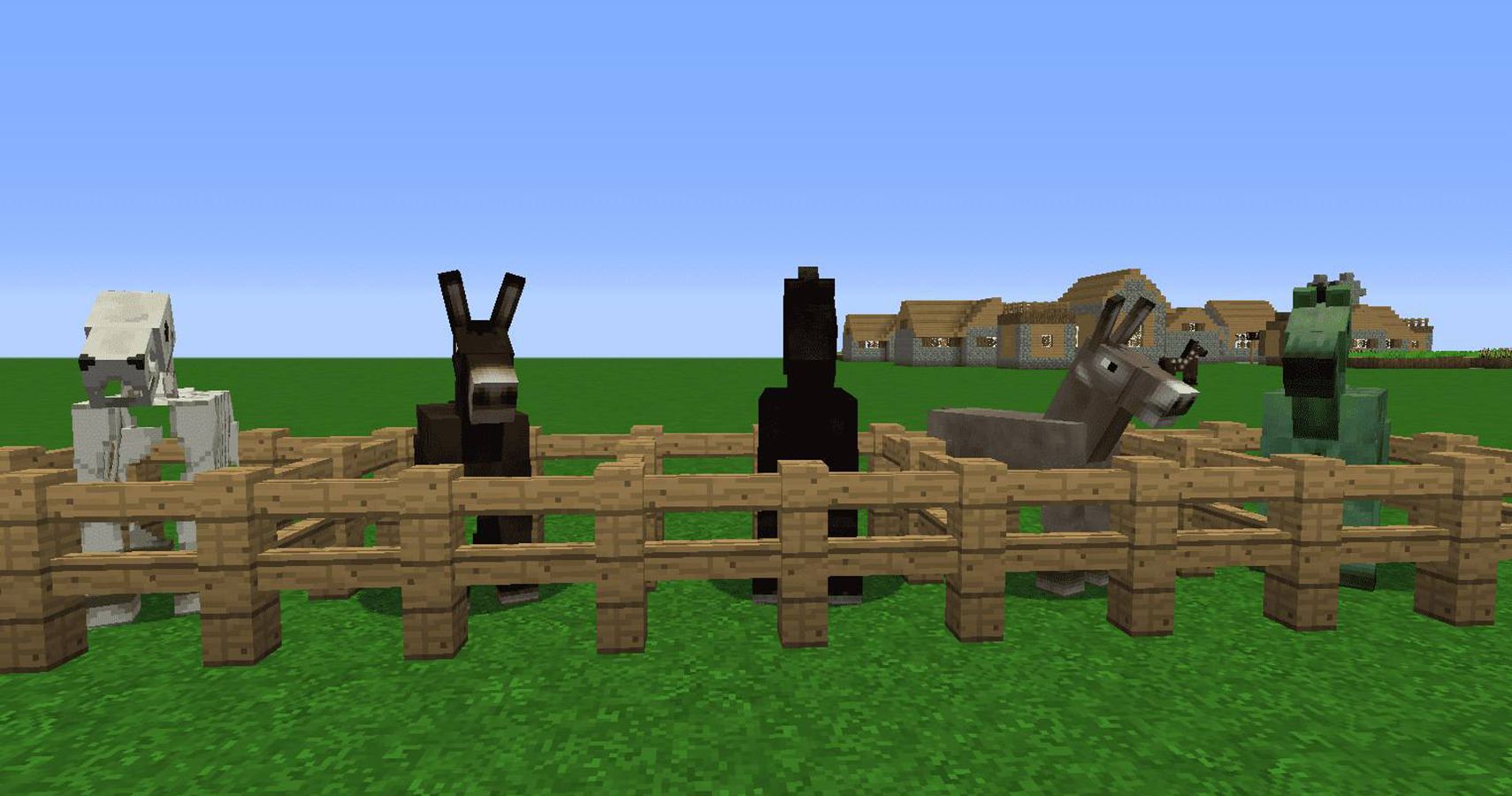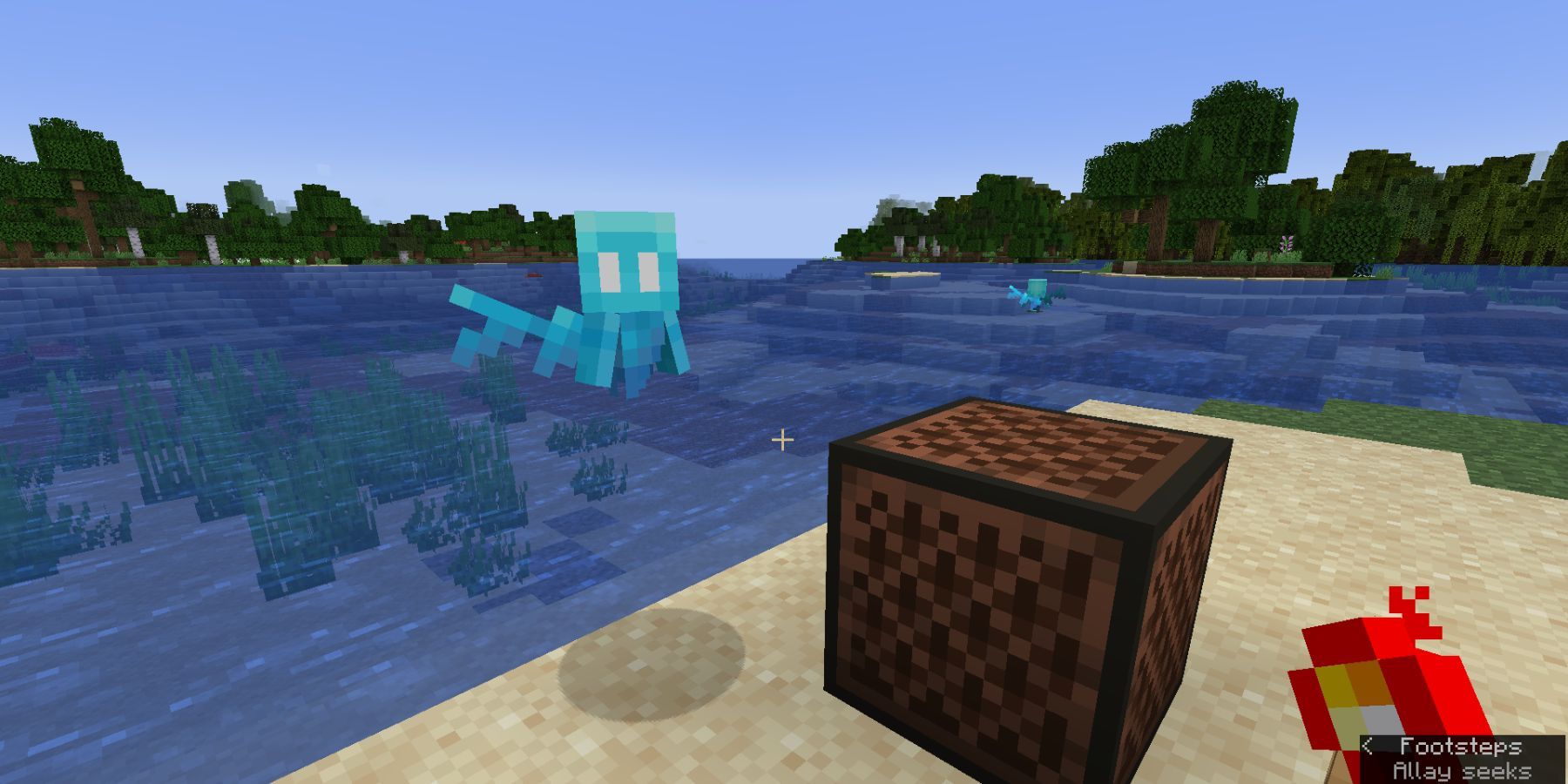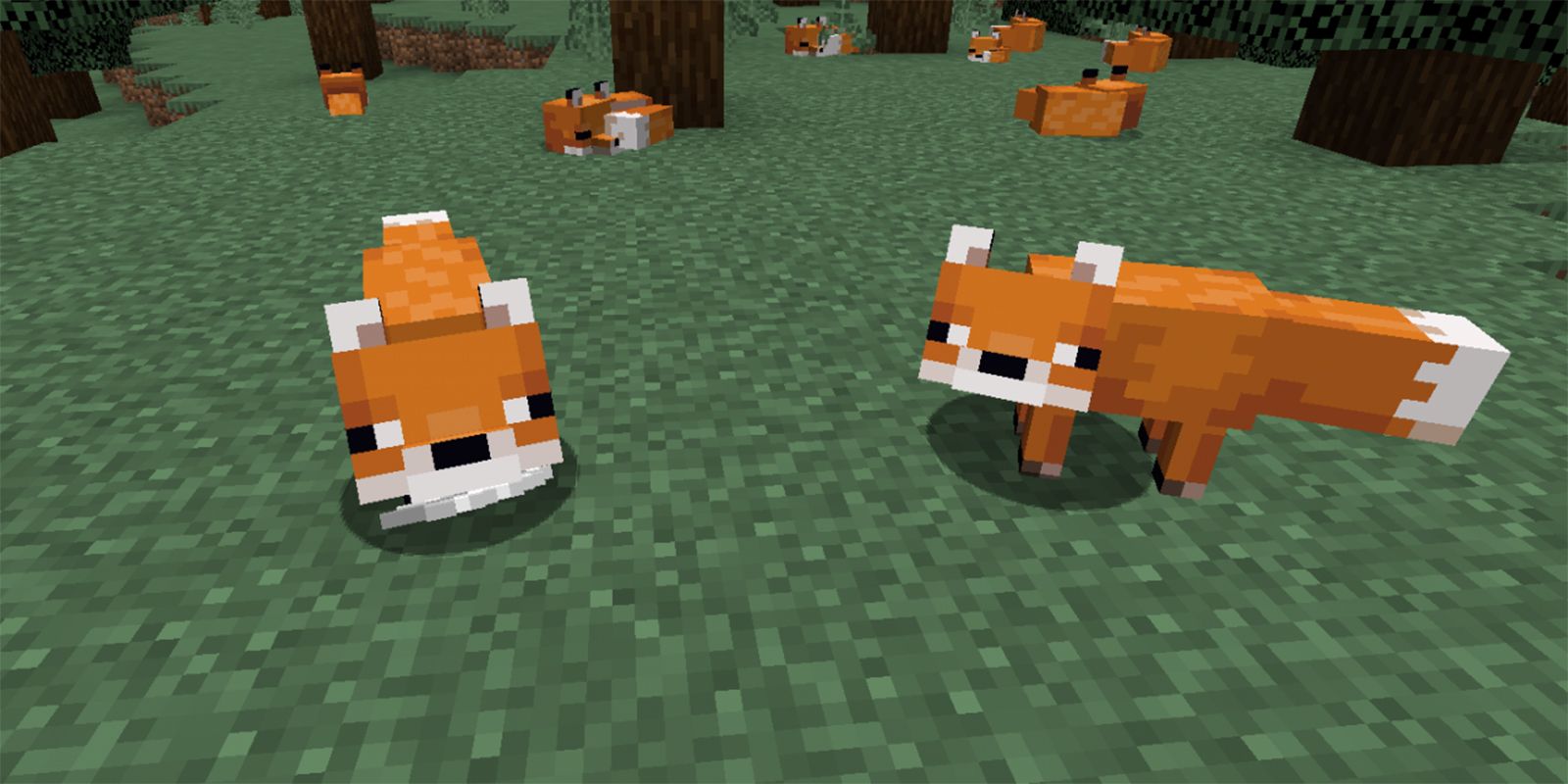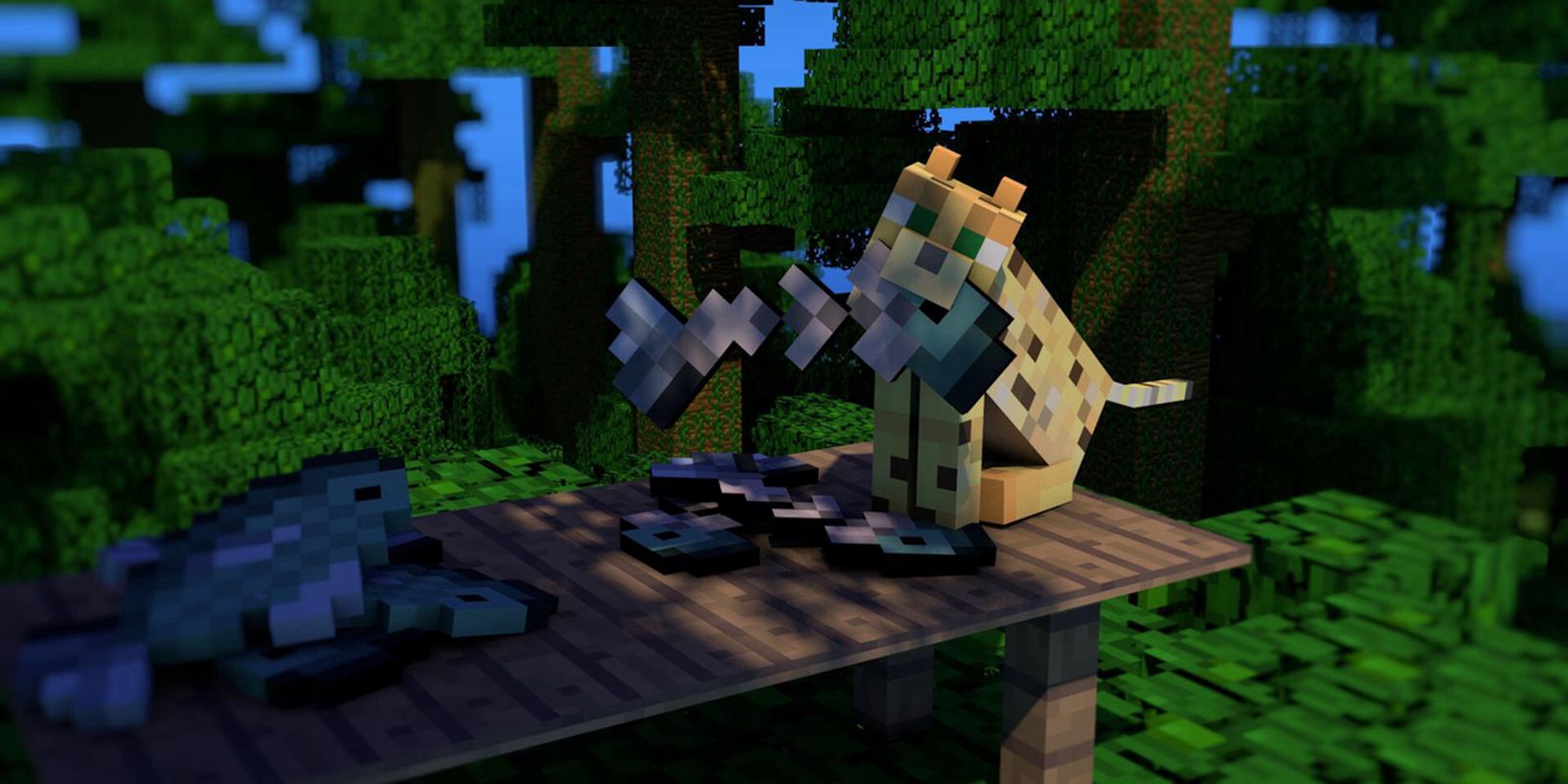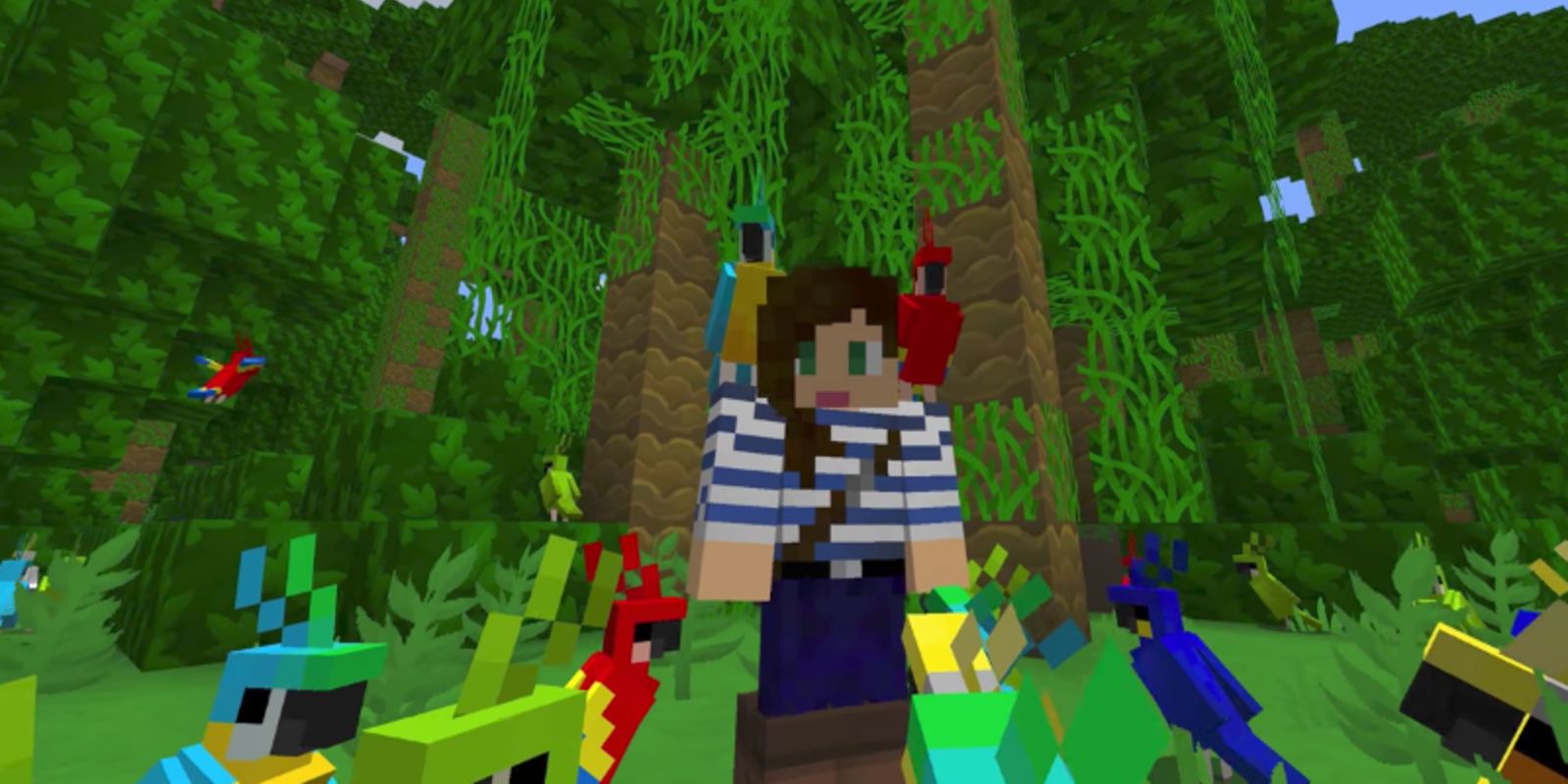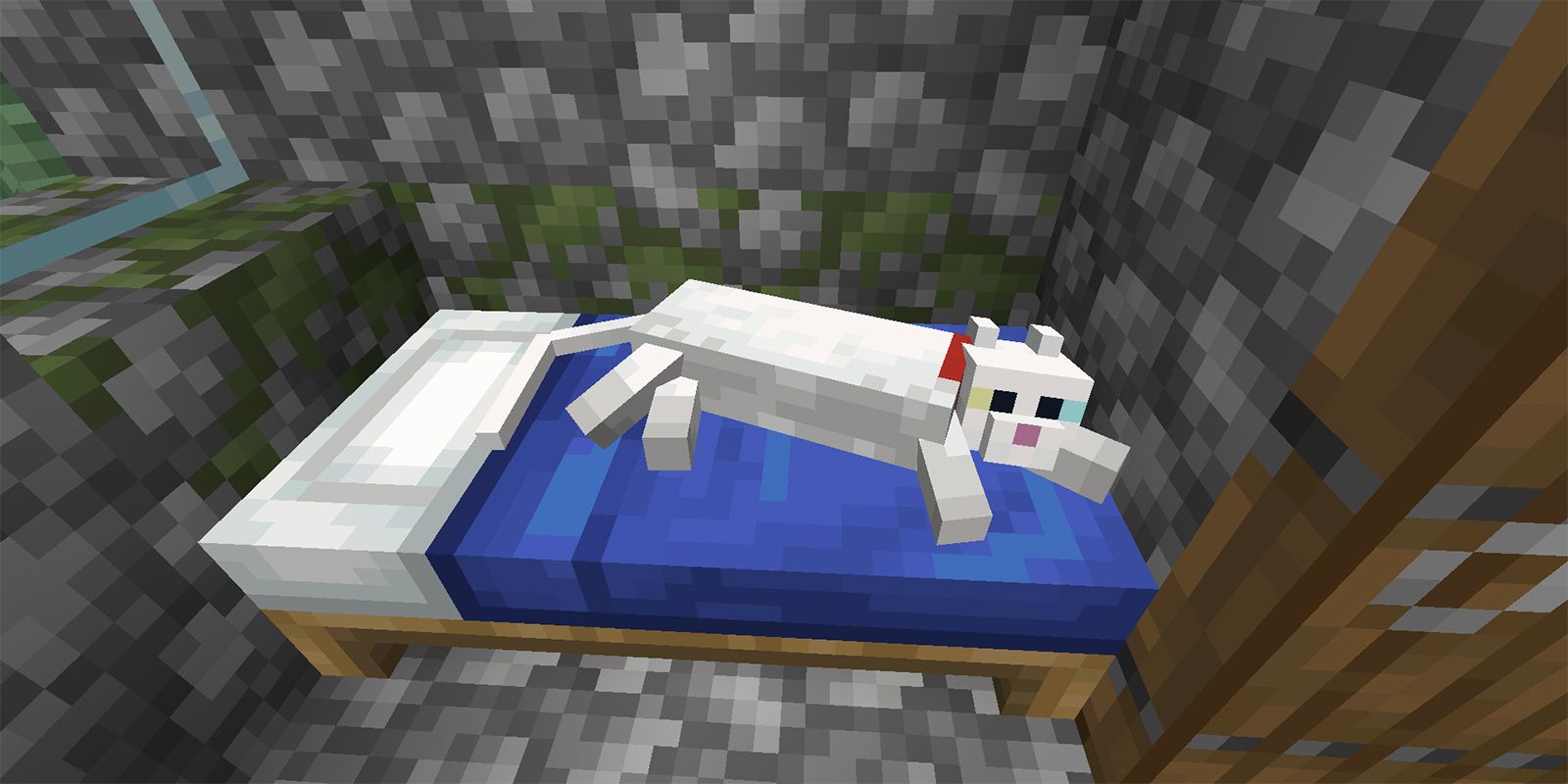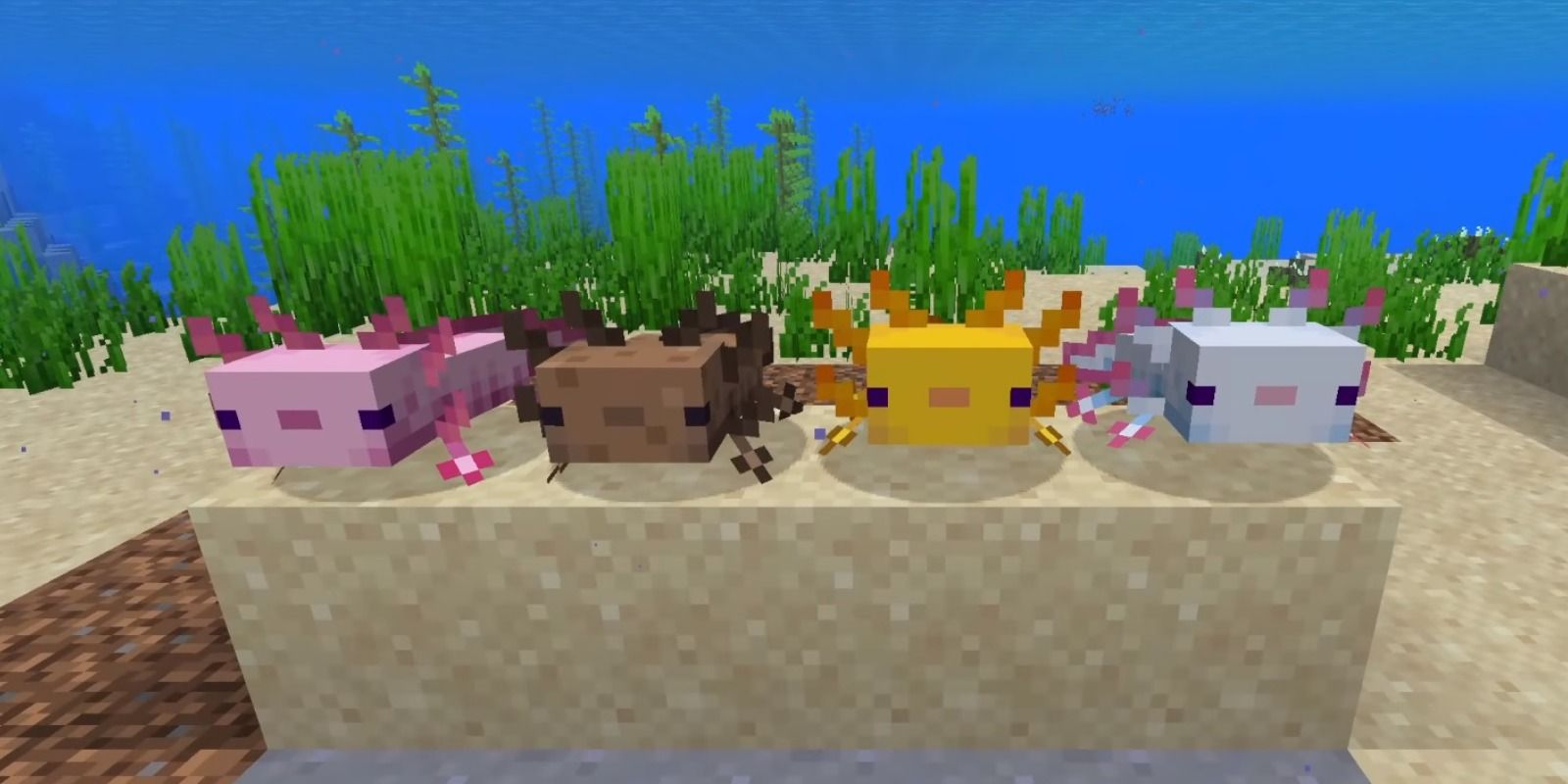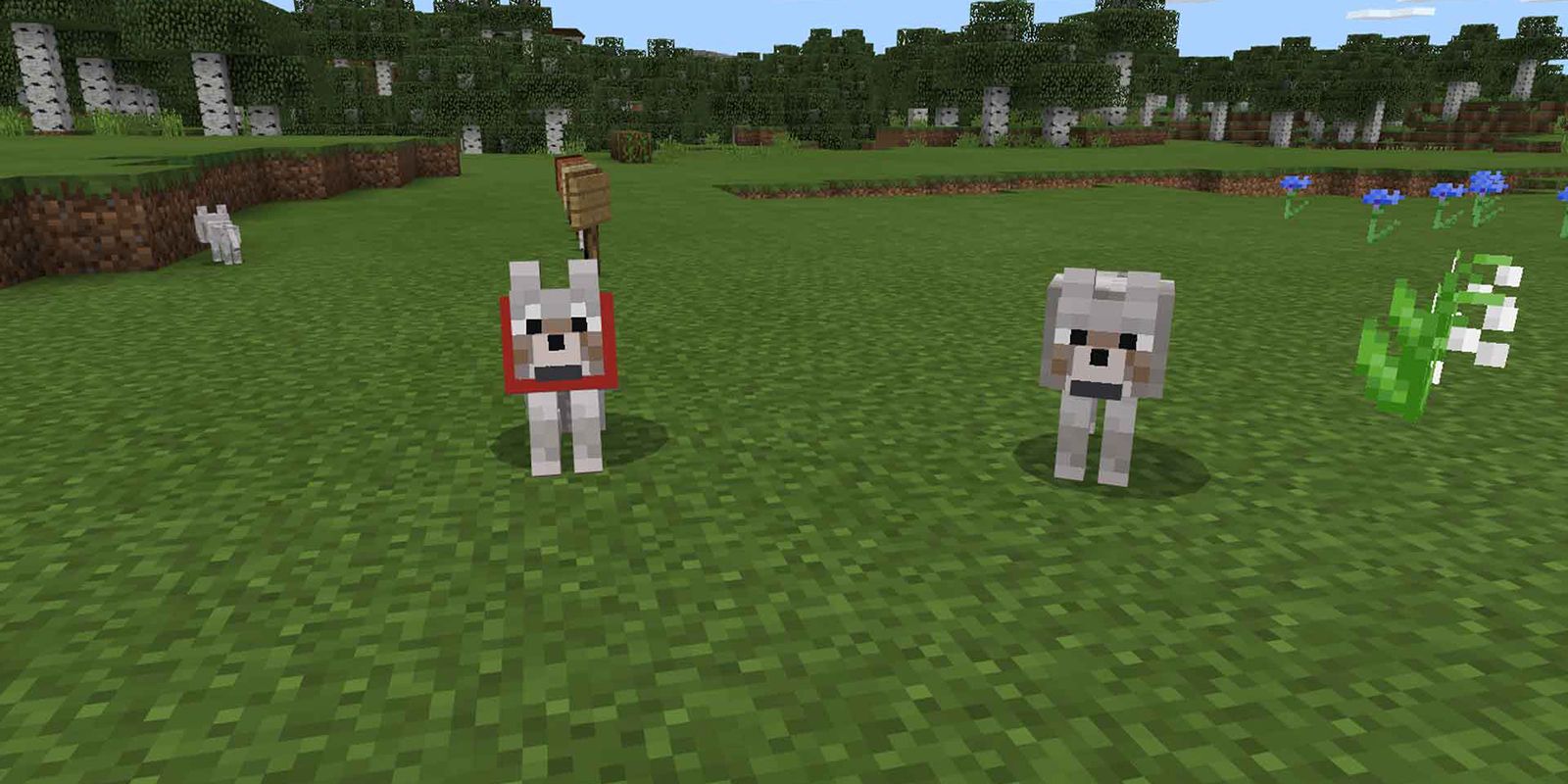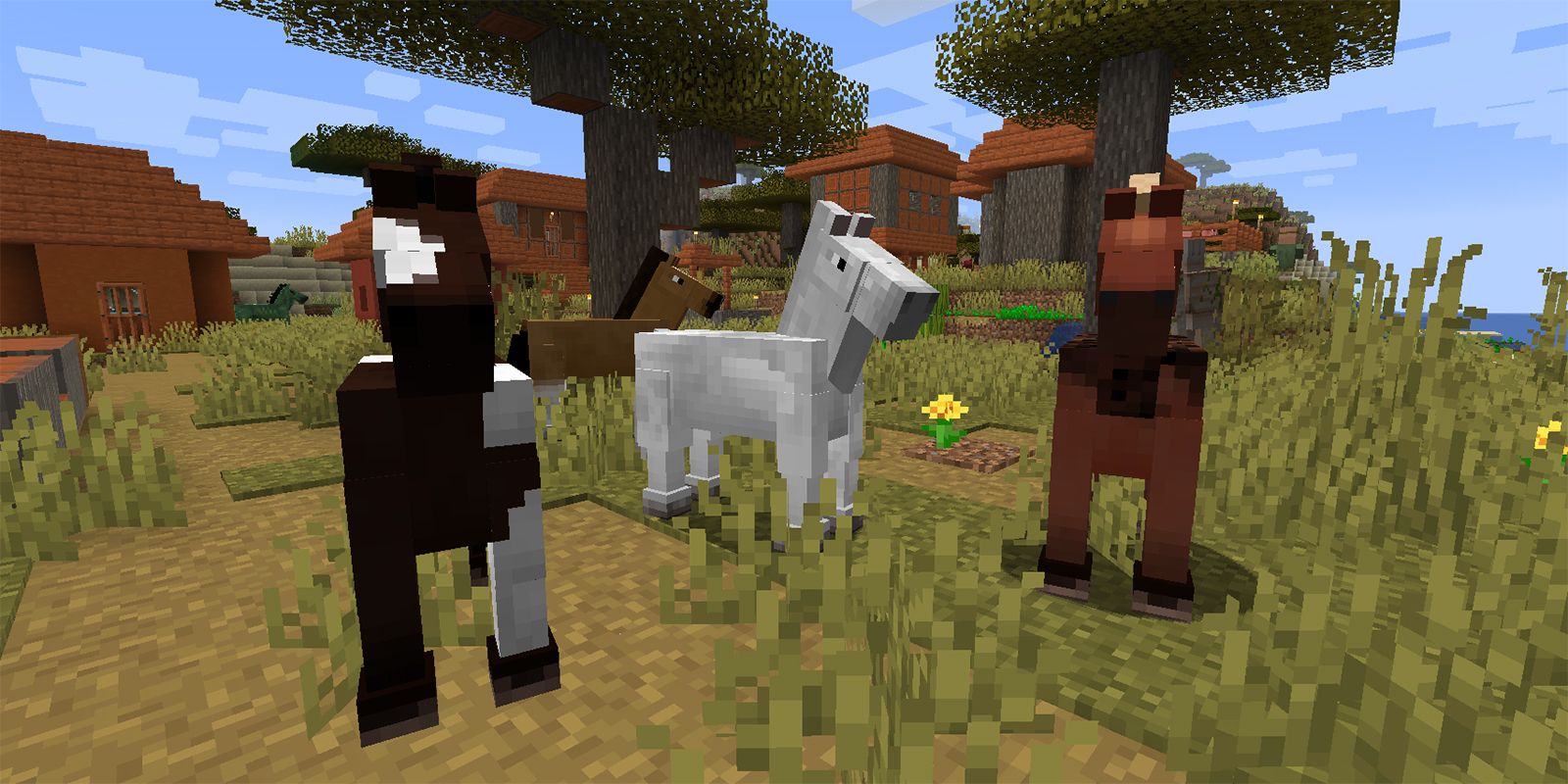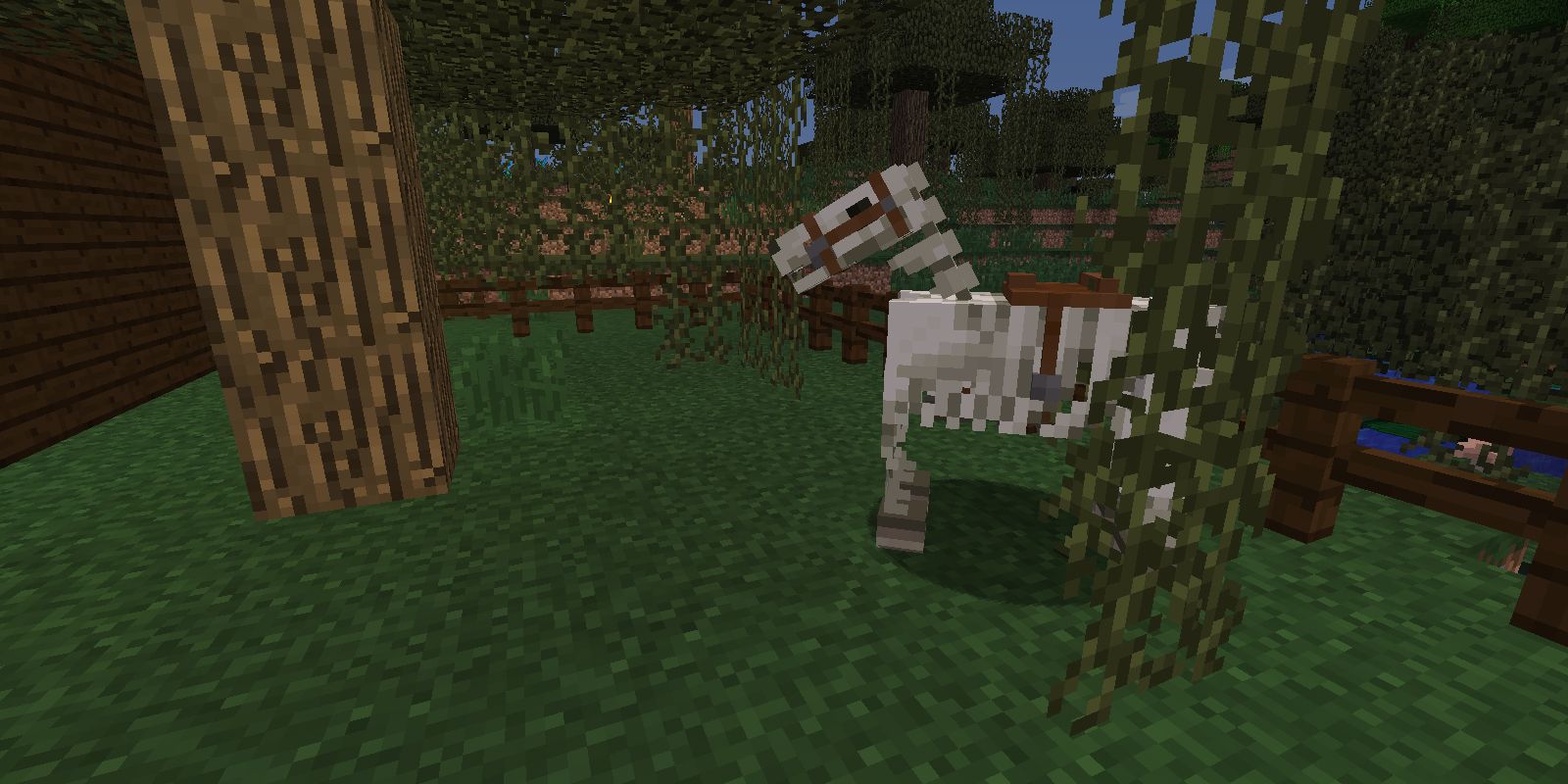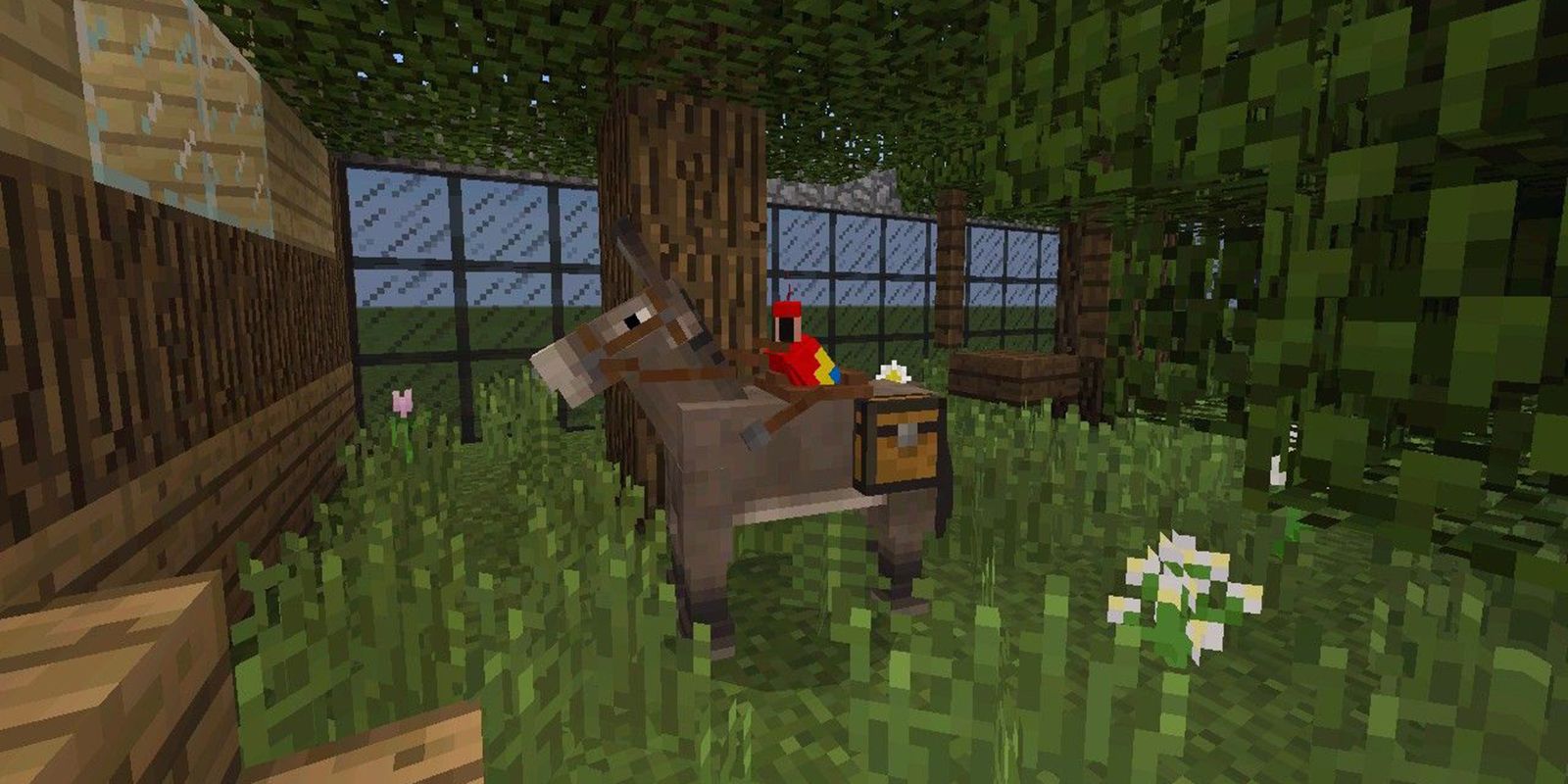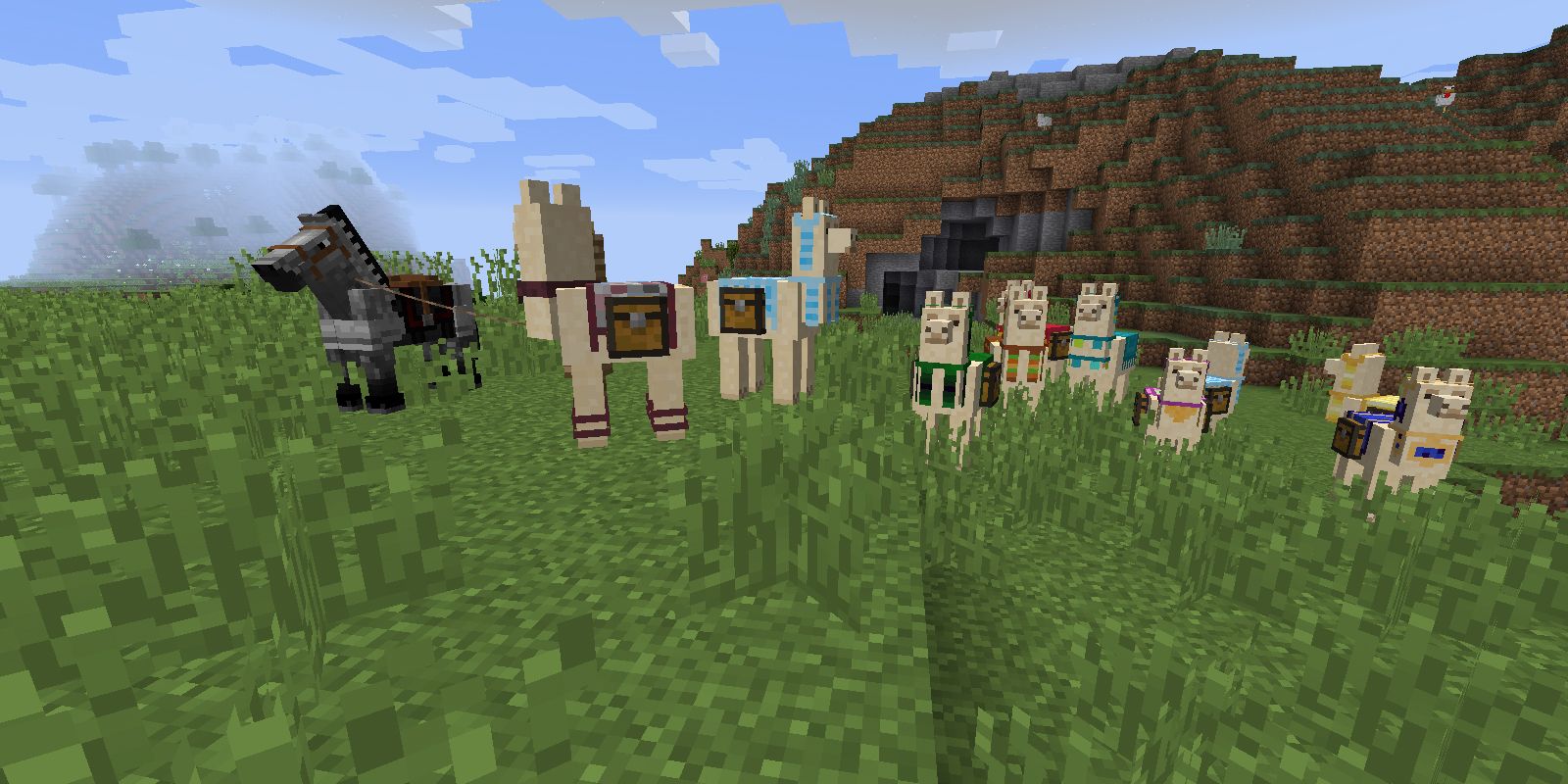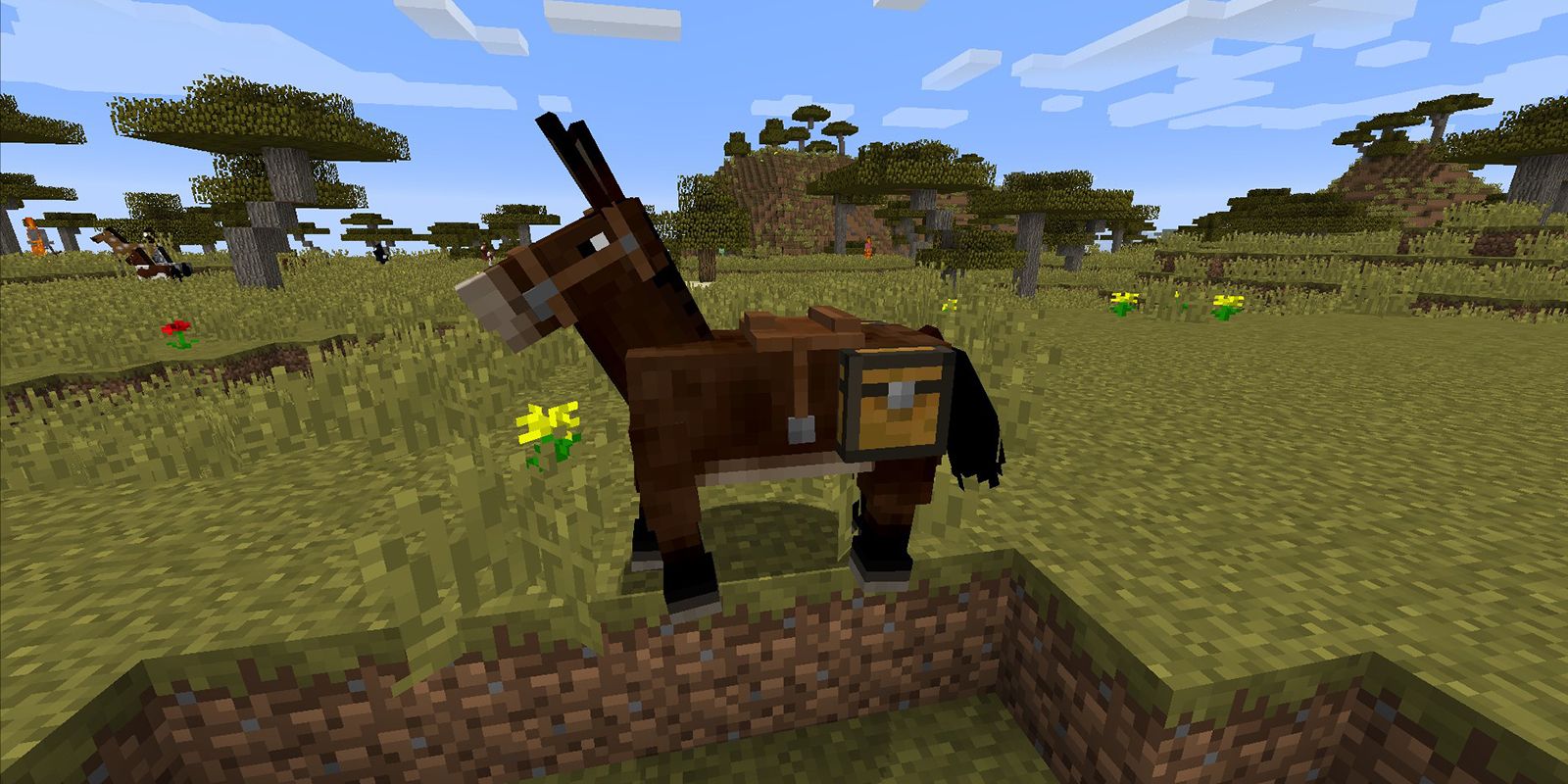Highlights
- Tameable mobs in Minecraft, such as the Allay, Foxes, and Ocelots, can provide helpful abilities and improve the player's ability to build, mine, and survive.
- Players should consider the pros and cons of different tameable animals to choose the best one for their playthrough, such as the Allay for finding items, Foxes for attacking threats, and Ocelots for warding off Creepers and Phantoms.
- Finding and taming these animals requires specific methods, such as finding Allays in Pillager Outposts or Woodland Mansions, taming Ocelots with Raw Cod or Salmon, and taming Foxes with Sweet Berries in the Taiga biome.
Out of all the tools at the player’s disposal in Minecraft the most interesting and often most useful are the various tameable mobs the player can encounter or create. These animals and creatures can provide helpful abilities that the player would not otherwise have and can dramatically improve the player’s ability to build, mine, and survive.
Updated on September 23rd, 2023: There are quite a few tameable animals in Minecraft. Some of them are much more useful than others, featuring more health, the ability to attack, and even the ability to carry things for the player. Players in survival mode will definitely want to check out the tameable animals on this list to decide what is the best possible animal to use for their playthrough. To better explain the pros and cons of these tameable animals in Minecraft, the following list has been updated with HP and size parameters.
12 Allay
|
Health |
20 (10 x Hearts) |
|
Size (Width x Height) |
0.6 Blocks x 0.6 Blocks |
The Allay is the newest, somewhat tameable mob added in Minecraft's new Wild Update in June 2022. The Allay was a mob voted in by the Minecraft community back in 2021, and as a result, it's been added to the game. Its design is very similar to the already existing hostile Vex mobs which can be summoned by Evoker mobs found in Woodland Mansions.
The Allay specializes in finding items for the player. While players are holding an item, they can interact with the Allay, which will then grab the item and look for identical items on the ground within a 64-block radius and bring them to the player. As long as players have given an Allay an item, the Allay will follow that player, which technically has tamed them and made them loyal to the player.
To find an Allay, players should look for Pillager Outposts, in which Allays spawn inside wooden cages. They can also be found in prison cells inside Woodland Mansions, but players are much more likely to discover them at Pillager Outposts since those are more common structures and spawn in multiple biomes.
11 Foxes
|
Health |
|
|
Size (Width x Height) |
|
The only way to tame a fox is to breed two adults with Sweet Berries and the kit will ‘trust’ the player. Foxes will attack any mob that threatens the player but are too weak to be effective deterrents.
The downside to foxes is that they will kill chickens and rabbits and can jump the fences players use to protect said animals. They also have a habit of snatching any items left on the ground. Interestingly a fox will gain the benefits of whatever weapon is in their mouth which would be useful in combat if they didn’t die so quickly.
On certain rare occasions, a fox will spawn with one of several items in its mouth. These items are; Feather, Leather, Wheat, Egg, Rabbit Hide, Rabbit’s Foot, and Emeralds. Foxes will drop these items when killed or grab a food item instead. To find a fox, players will need to head to the colder Taiga biome, and even then, they are faster creatures that can be tough to entice with Sweet Berries.
10 Ocelot
|
Health |
10 (5 x Hearts) |
|
Size (Width x Height) |
|
Ocelots are similar to foxes in that they aren't directly controllable, but provide benefits to the play. They also attack chickens and can kill them through fences, but they leave rabbits alone. What makes an Ocelot more useful is that its presence will ward off Creepers and Phantoms who will keep a 16-block distance. Keeping a few in fenced-off areas around a base is a good way to keep these hostile mobs at bay, though once an opening is created they will eventually run off.
To tame an Ocelot players must have a piece of Raw Cod or Salmon and be within 10 blocks. The Ocelot will approach so long as the player doesn’t move. After a few feedings, heart particles show signifying that Ocelots are now trusting. To find an Ocelot, players will be looking around for quite some time, since they spawn exclusively in jungle biomes and even then are a fairly rare sight.
9 Parrot
|
Health |
6 (3 x Hearts) |
|
Size (Width x Height) |
|
Parrots can be tamed with seeds and told to sit, follow the player around, or perch on the player’s shoulder. To find them, players need to head over to a jungle biome, where parrots are a common and easy-to-find passive mob.
What makes the parrot useful is that it will imitate the sounds of any mobs that are within a 20-block radius, including hostile mobs. This can be an effective warning system as the parrot will imitate the sounds hostile mobs make when they get close. Many players like having a few stationed around the perimeter of the base or while traveling. Just don’t feed them cookies.
Feeding a Parrot any type of Seed such as Wheat, Melon, Pumpkin, or Beetroot will tame it. Parrots will also dance near a Jukebox if there is a Music disc playing.
8 Cat
|
Health |
10 (5 x Hearts) |
|
Size (Width x Height) |
|
Cats in Minecraft spawn in villages that have at least four beds and a villager. A black variant will also spawn in witch’s huts. Cats can be tamed and bred with raw fish. The player must have a raw fish in their hand to command the cat to stand or sit.
Their main perk is similar to Ocelots in that Creepers and Phantoms will not approach them. They also provide their owners with gifts like string, feathers, raw chicken, and even Phantom Membranes whenever the player sleeps. Players looking to get a feline companion in Minecraft will have an easier time finding a cat rather than an ocelot, since villages are somewhat common, and most decently sized villages will spawn cats.
7 Axolotl
|
Health |
14 (7 x Hearts) |
|
Size (Width X Height) |
0.75 Blocks x 0.42 Blocks |
Axolotl are a unique new animal that makes living in or near the ocean a much more viable prospect. Appearing in five color variations Axolotls can be scooped up with a bucket and attached to leads. They are alike an aquatic hybrid of Wolves and Foxes. In that sense, they can't actually be tamed like other animals, but it's possible to transport them and ensure the player won't ever lose them by using leads and buckets.
Naturally, they’ll kill Fish, Squid, and Glow Squid if they get too near. Following the Wild Update, axolotl will also eat tadpoles, so players in the process of breeding frogs may want to keep their axolotl separate. The player can use Tropical Fish to coax them into attacking Drowned and Guardians or will retaliate if injured. Sometimes when injured they can fake their death dropping to the ocean floor where they’ll regenerate their health back.
6 Wolf
|
Health |
|
|
Size (Width X Height) |
|
Wolves appear in forests and taiga biomes in packs. They are neutral unless attacked and can be tamed with bones and bred with meat. Wolves don't get food poisoning so players can use items like Rotten Flesh or Pufferfish to heal them. Once tamed it will follow the player, sit, and attack mobs hostile to the player.
Another benefit with wolves is that skeletons will avoid them like Creepers will with cats. Having a pack of both wolves and cats in the base or accompanied by both when traveling is a safe way to go. In order to tame a wolf, players simply need to grab a bunch of bones and feed them to the wolf.
Eventually, they will turn into a dog with a collar, which can be interacted with by holding a dye to change its color. A lead can also be used to guide a wolf, though tamed wolves will always follow their owner no matter how far they go.
5 Horse
|
Health |
Range - 15 (7.5 x Hearts) to 30 - (15 x Hearts) |
|
Size (Width X Height) |
|
As useful as defensive mobs are, transportation mobs like Horses are much more helpful in the long run. Players will likely do a lot of exploring in this game and that involves a lot of long-distance traveling, especially if their world was built with Large Biomes.
Horses found in plains biomes can be tamed by repeatedly trying to ride them until they stop bucking the player off. Horses come with varying stats like health, movement, speed, and jump height which can be improved through breeding. They can also wear armor to improve their durability. This is one of the fastest ways to travel in the game.
There are 35 color variations in the game for players to collect. They can be healed with Sugar, Wheat, Apples, Golden Carrots, Golden Apples, and Hay Bales can be fed to horses to heal them.
4 Skeleton Horse
|
Health |
15 (7.5 x Hearts) |
|
Size (Width X Height) |
|
Skeleton Horses for all intents and purposes are identical to regular horses except they are faster, more durable, harder to find, and look cooler. A skeleton horse is created when a regular horse is struck by lightning and can be tamed in the same way.
They are faster and have the unique ability of being unable to drown allowing the player to ride them across the ocean floor. Skeleton horses cannot be fed and Splash Healing Potions will poison them. The trick is to use Splash Potion of Harming and it will regenerate health due to its undead nature.
3 Donkey
|
Health |
Range - 15 (7.5 x Hearts) to 30 - (15 x Hearts) |
|
Size (Width X Height) |
|
Donkeys are another ridable mob that is also found in plains and tamed by repeatedly trying to ride them. They are slower than horses but come with the ability to carry chests for up to 15 inventory slots. Having the ability to ride a mob that increases inventory storage is very, very useful.
Given their shorter stature and slow riding speed they are commonly used in mines to transport gathered materials or carry extra tools. Donkeys can be healed with Sugar, Wheat, Apples, Golden Carrots, Golden Apples, and Hay Bales.
2 Llama
|
Health |
Range - 15 (7.5 x Hearts) to 30 - (15 x Hearts) |
|
Size (Width X Height) |
|
Llamas spawn naturally in savanna and mountain biomes in packs of four to six. Llamas are tamed by trying to ride them repeatedly until friendly. They can not be ridden but can be equipped with chests for an inventory space of up to 15 slots. They also spit at hostile mobs doing damage, but their main perk is caravanning.
When players leash one llama up to nine other llamas will follow it. One caravan of 9 llamas can effectively carry 135 slots of items if all tamed and equipped with chests. But players can theoretically lead as many llamas as they want. If players lead 10 then each will have 9 llamas in the caravan giving them 90 llamas with a whopping 1,350 slots of inventory. This is the best way to transport massive amounts of items if they're on a big mining expedition or relocating their base of operations.
1 Mule
|
Health |
Range - 15 (7.5 x Hearts) to 30 - (15 x Hearts) |
|
Size (Width X Height) |
|
The Mule is arguably the most helpful mob in the entire game and a player's best friend in Survival mode. It is not found naturally and can only be obtained by breeding a horse and a donkey together. The result is an animal that sits between a donkey and horse in terms of speed and ability to carry a chest for 15 inventory slots. They can be healed with Sugar, Wheat, Apples, Golden Carrots, Golden Apples, and Hay Bales.
Players like to use Mules for building projects around the base as they’ll get there quickly with supplies to do the work or for traveling to other biomes or even the Nether as they can carry helpful items for survival. It is an incredibly versatile and helpful mob for almost any activity.
Minecraft is available on multiple platforms, including PC, PlayStation 4, Xbox One, PlayStation 5, Xbox Series X/S, Nintendo Switch, and Android and iOS devices.

